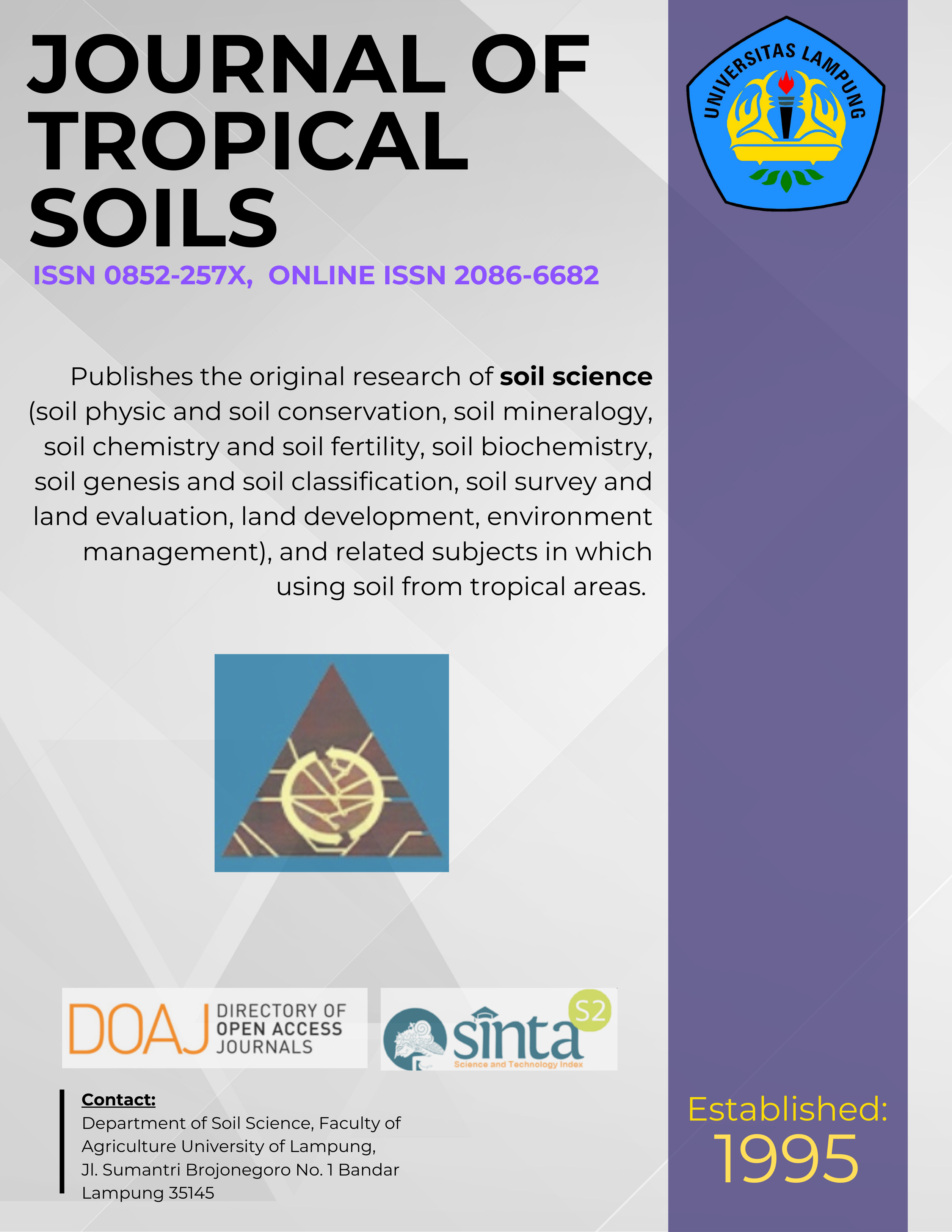Assessment of Indigenous N, P and K Supply for Rice Site Specific Nutrient Management in Buru Regency
Main Article Content
Abstract
Rate of fertilizer that should be applied to rice soil based on Site Specific Nutrient Management (SSNM) depends on indigenous nutrient supply, its recovery efficiency, and the amount of nutrients requirement to achieve the yield target. Research on nutrient omission plot was conducted in farmers irrigated land on Waeapo plain, Buru Island. In this area, N, P, and K were the main limiting factors of rice growth and yield. To overcome the constraint, this assessment was conducted to determine the indigenous supply of N, P and K and optimal target of rice productivity. Results of this assessment showed that the average of rice optimum productivity (Mg grain water content/w.c. 14% ha-1) in Waeapo plain was 6.55 Mg DGM (Dry Grain Milled) ha-1, with range from 5.6 to 7.3 Mg DGM ha-1 depended on the indigenous supply of N, P and K. The average value of the indigenous N, P and K supplies in Waeapo plain Buru was 65.59 kg N ha-1, 13.70 kg P ha-1 and 78.65 kg K ha-1, respectively while average productivity of rice on that indigenous N, P and K supplies was 5.05, 5.96 and 6.05Mg DGM ha-1, respectively. The value of indigenous nutrient supply of this nutrient can be used as a basis of fertilizer recommendation with the SSNM concept.
Keywords: Indigenous nutrient supply; nitrogen; phosphorus; potassium; Site Specific Nutrient Management
Downloads
Article Details
License for Authors
Authors who publish with this journal agree to the following terms:
- Authors retain copyright and grant the journal right of first publication with the work simultaneously licensed under a Creative Commons Attribution License that allows others to share the work with an acknowledgement of the work's authorship and initial publication in this journal.
- Authors are able to enter into separate, additional contractual arrangements for the non-exclusive distribution of the journal's published version of the work (e.g., post it to an institutional repository or publish it in a book), with an acknowledgement of its initial publication in this journal.
- Authors are permitted and encouraged to post their work online (e.g., in institutional repositories or on their website) prior to and during the submission process, as it can lead to productive exchanges, as well as earlier and greater citation of published work (See The Effect of Open Access).
License for Regular Users
Other regular users who want to cite, distribute, remix, tweak, and build upon author’s works, even for commercial purposes, should acknowledge the work’s authorship and initial publication in this journal, licensed under a Creative Commons Attribution License.

